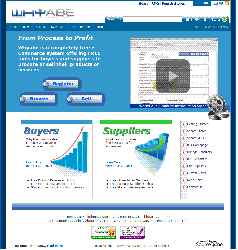A year ago, with the economy on the verge of collapse, and our government basically maintaining a holding pattern, we heard a call that change was coming. Regardless if you bought into it or not, it seemed that the path we were on was unsustainable, and something would be different soon.
I for one was hopeful that we would see some accountability in the government as well as the corporate world. I felt that the bailout(s) would force our government’s hand to start cutting costs – their own as well as the companies they gave billions to. I also thought the trend would be contagious, from the federal government on down to state and local, and from large companies needing bailout funds down to small companies just trying to survive the current recession.
A year later, what do we have to show for it? Not much. Over the last few months we have seen that even during an economic crisis, most people will look to maintain the status quo, for better or worse. It’s ironic that a message of change sold our country, yet most people only want it if it’s not going to affect them.
In my job as a consultant that specializes in cost reduction, I don’t have the luxury of maintaining the status quo. Inherently, reducing costs means shifting away from traditional thinking, or having a damn good reason why you shouldn’t. That role requires accountability – recommendations have to come with solid facts behind them, alternatives need to be explored, and support needs to come from the highest levels – because change doesn’t come easy.
Our federal, state, and local government, along with many companies – from large corporations to small businesses, went into this new year with a noble cause of cutting out the fat, getting more efficient, and changing things that didn’t make sense. But along the way, many didn’t realize they had to be accountable for those actions and actually shift away from the status quo to be effective. Without that accountability, real change won’t take place.
A great example of lack of accountability and status quo protection is happening in the county I live in. Recently, Montgomery County (outside of Philadelphia) embarked on a budget balancing initiative, cutting programs and jobs across the board. One area that took some major hits was at the county building where most workers were stationed. This building included a county run cafeteria and day care center that employees could take advantage of at a discounted cost. County officials decided that the cafeteria and day care center were too costly to run, and outsourced both programs to companies that quickly raised prices for employees. Most of the employees of the county that work in this building do not have high paying jobs, and rely heavily on little benefits such as the low cost daycare center to keep them afloat. It’s recently been announced that these employees will now be required to pay a greater portion of their healthcare costs next year.
On the surface, it appears the county is making some tough choices, but are they really making cuts that will have a long term positive impact on the county? Not really. The likelihood is that many of these employees will find themselves in over their head financially, without the salary or ancillary benefits that allowed them to live and work in the most expensive county in Pennsylvania. Once they do, they will be required to utilize the same state and county services that they provide. The plans aren’t eliminating the cost burden, but simply shifting it be paid at a later date.
Government is not the only one with these problems. A similar lack of accountability in decision making can be seen in one of my customers. Their board of directors issued a mandate to shave $30 million out of the budget by the end of 2009. Even with this mandate, they haven’t allowed their cost reduction consulting firm (
Source One) access to the areas where they spend the most – telecom and benefits, because in the past they have been considered “hands off” and politically sensitive, meaning the powers that be don’t want to challenge those who control the spend. Even in times of extreme emergency and dire straits, the first priority appears to be keeping the status quo, because change requires accountability.
From AIG fixing their problems by shifting good investments to a new company and leaving the bad to rot (ala GM), to state governments cutting back on police forces while huge process inefficiencies go unchecked, it is clear that the status quo is still being maintained, and accountability is avoided. On the surface, it may look like we are on the right track, but look under the covers and what you’ll find is a mess. We’re not going to have change anytime soon.



